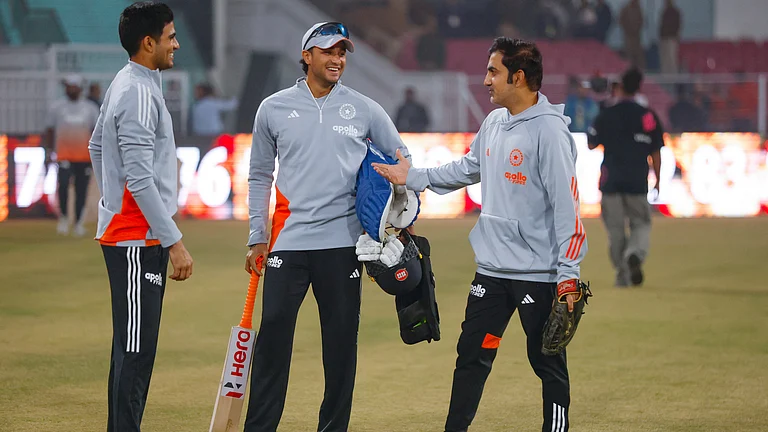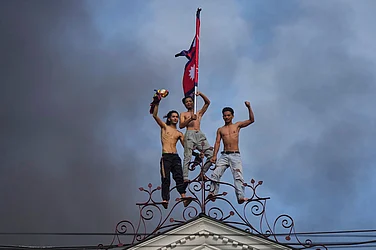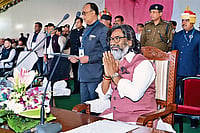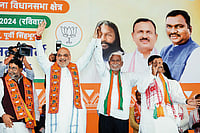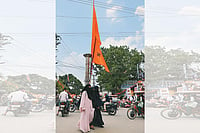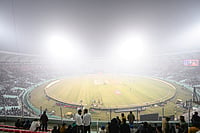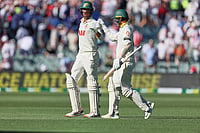Sitting among the elite film buffs of Kolkata in a dark room with a non-working air conditioner that further legitimises the intellectual craving of the city's Left-leaning intellectuals, for the first time I saw Iranian director Marzieh Meshkini’s film The Day I became a Woman. For me, it was an otherworldly experience — seemingly a crusade against all those patriarchal and masculine metaphors of the societies.
Anthology of three short stories interwoven through the narrative of struggles a woman pursues in different stages of her life to get rid of the structural patriarchy, the film was a successful intervention. However, metaphorically the strongest part was the moment Hava, a nine-year-old girl, was made to wear a hijab and was told by her mother that she would no more be able to play with her little male friend as she had become a woman.
I can still smell the silence of the room, packed with sobbing tears empathetic to Hava and her lost friendship. The major metaphor of patriarchy as emerged was nothing but the hijab — a black veil that upholds the embedded patriarchy in Islam, the Marxist liberals who gathered at the show said in desperation.
I will not say that I was of any different opinion until I chanced upon an article by Lila Abu Logodh titled Do Muslim Woman need Saving? The very idea about ‘Islamic Patriarchy’ as has been portrayed in different Iranian films by progressive directors of post-Khomeini era like Abbas Kiarostami, Mohsen Makhmalbaf, Sameera Makhmalbaf, and Jafar Panahi someway or other blinded us to any other aspect of the most-discussed hijab question.
From The Day I Became A Woman to Jafar Panahi’s masterpiece Offside, what we all learnt about is the perennial oppression that the Muslim women have been subjected to. From imposed hijab to the denial of permission to watch football match in the stadium shaped our understanding of the Iranian Society.
In this context when Mahsa Amini was killed in custody of the Iranian morality police for not wearing hijab ‘properly’ and millions of Iranian women came affront ignoring the prowess of the state, several liberals like us rightly celebrated the moment. A few even referred to it as continuation of the underground film movement that people like Panahi or Kiarostami led throughout the period of oppression.
Whatever way may it be perceived, the voluntary sacrifice of the lives of Iranian women for the cause of choosing to not wear hijab the way the state wants them to do and closer home the fight of several Muslim women in the southern state of Karnataka to wear hijab against the command of the state to not do so represents nothing more than the state of an absolute power that orders and determines every moment of existence, that imposes subservience and homogenise the diversity.
Hijab in the hands of imperialists
In the post 9/11 fiasco that the United States never expected to happen in their land being secluded throughout the first and second world wars, the flames of which engulfed Asia, Europe, and Africa, the attack on Afghanistan was inevitable. However, besides the geopolitical strategic advantage that the war was about to offer to the United States, there was another subtle reason —less cited but a poignant one— at least to gain the global empathy. This was reflected in the address of Laura Bush, the First Lady of the United States in 2002.
When the US military progress in Afghanistan became formidably strong enough to bomb the innocent civilians, Laura said, “Because of our recent military gains in much of Afghanistan, women are no longer imprisoned in their homes. They can listen to music and teach their daughters without fear of punishment. The fight against terrorism is also a fight for the rights and dignity of women.”
This justification of the war through the women’s independence shows what noted philosopher Gayatri Chakravorty Spivak refers to as the ‘white men saving brown women from the brown men’.
The statement of the US First Lady clearly shows what Lugodh rightly points out as ‘colonial feminism’. There have been several instances from the colonies across the world to show how the women question had been utilised by the colonial masters to justify their colonies. The intervention of the British against Sati, child marriages, and other practices categorically helped them to sustain as a ‘civilisational project’ concealing the brutal aspects of their economic and political subjugations.
Sociologist Marnia Lazreg notes how on May 16, 1958, just four days before the liberation of Algeria from the French colonisers, the French generals in Algeria arranged a march along with thousands of men and a few women without hijab just to show to their bosses back in Paris that Algerians have faith in French nobility. The symbolic presence of the women without hijab represented nothing except what Lazreg says the ‘obsession’ of the French colonisers with the Algerian women.
She also described the skits that used to be performed in the Muslim girls' schools in Algeria in the mid-19th century. One of the skits reads, “Oh! Protective France: Oh! Hospitable France! Noble land, where I felt free Under Christian skies to pray to our God…God bless you for the happiness you bring us! And you, adoptive mother, who taught us that we have a share of this world, we will cherish you forever!”
So, unveiled Muslim women have always been used as an instrument to justify invasions, colonisation, and wars. Hijab is not merely a cloth that the colonial feminists don’t like or think that limits the agency of Muslim women. It is rather a piece of cloth that they use to justify their colonial greed.
From Iran to Karnataka — It’s uniformity stupid
On one hand, presence and absence of hijab is a matter of colonial and imperial anxiety, on the other, it is the instrument for the state to impose uniformity. French philosopher Michel Foucault, while examining the power dimensions of the 18th and 19th century Europe, observed the emergence of a new kind of power —known as biopower— that tried to, as the philosopher notes in his seminal lecture The Will to Knowledge, “administer, optimise, and multiply it, subjecting it to precise controls and comprehensive regulations.”
The game is here all about the regulation and uniformity. In the case of Iran, Amini suffered because she didn’t comply with the diktat of wearing hijab in a uniformed manner. In Karnataka, the students who wanted to wear hijab denied the impositions of school level uniformity that made them strip of their individual identity. The state machineries always rule through the collectives. If one opposes the herd-behaviour, the state becomes paranoid.
If we look at the most of the judicial discussions over the hijab issue in India, it roams around primarily within the periphery of uniform and uniformity. Sociologist Sundar Sarukkai in his Economic and Political Weekly paper titled Uniformity or Equality? rightly notes, “Uniforms as a dress code in educational institutions are not symbols of equality as much as they are symbols of ‘order’, ‘discipline’, and ‘control’ (like in prison uniforms).”
This understanding of uniformity is what has been challenged by the Muslim women of both Iran and India. Hijab here turns out to be not merely a piece of cloth or a ploy in the hands of either the imperialists or the Taliban. It is rather an assertion, a voice against the imposed uniformity.
Through the slogans of ‘Zan, Zindagi, Azadi’, women in Tehran come out against the imposition of veils and girl students of Udupi scream out for their choice. Any of them can be the possible future of Hava — but not the one Meshkini showed in her film. They can be Hoora, the elderly woman in the anthology who bought everything she desired for in her youth and floated away in a ship leaving all the impositions behind while choosing to choose ‘How to Become a Woman’.








